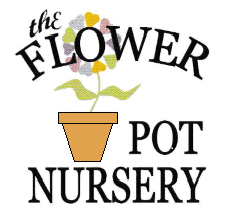5 Night Blooming Jasmine - Cestrum nocturnum - plugs / cuttings / transplants
Cestrum nocturnum (common names include night-blooming jasmine, night-blooming cestrum, lady of the night, queen of the night, night-blooming jessamine, and Hasna Hena (Bengali: হাসনা হেনা)), is a species of Cestrum in the plant family Solanaceae (the potato family). It is native to the West Indies, but naturalized in South Asia.
Description
Night-blooming jasmine is an evergreen woody shrub growing to 4 m (13 ft) tall. The leaves are simple, narrow lanceolate, 6–20 cm (2.4–7.9 in) long and 2–4.5 cm (0.79–1.77 in) broad, smooth and glossy, with an entire margin. The flowers are greenish-white, with a slender tubular corolla 2–2.5 cm (0.79–0.98 in) long with five acute lobes, 10–13 mm (0.39–0.51 in) diameter when open at night, and are produced in cymose inflorescences. A powerful, sweet perfume is released at night. The fruit is a berry 10 millimetres (0.39 in) long by 5 mm (0.20 in) diameter, either marfil white or the color of an aubergine. There is also a variety with yellowish flowers. There are mixed reports regarding the toxicity of foliage and fruit.
Cultivation
Cestrum nocturnum is grown in subtropical regions as an ornamental plant for its flowers that are heavily perfumed at night. It grows best in average to moist soil that is light and sandy, with a neutral pH of 6.6 to 7.5, and is hardy to hardiness zone 8. C. nocturnum can be fertilized biweekly with a weak dilution of seaweed and fish emulsion fertilizer.
Pharmacology
Toxicity
Ingestion of C. nocturnm has not been well documented, but there is some reason to believe that caution is in order. All members of the Solanaceae family contain an alkaloid toxin called solanine, though some members of the family are routinely eaten without ill-effect. The most commonly reported problems associated with C. nocturnum are respiratory problems from the scent, and feverish symptoms following ingestion.
Some people, especially those with respiratory sensitivities or asthma, have reported difficulty breathing, irritation of the nose and throat, headache, nausea, or other symptoms when exposed to the blossom's powerful scent. Some Cestrum species contain chlorogenic acid, and the presence of this potent sensitizer may be responsible for this effect in C. nocturnum.
Some plant guides describe C. nocturnum as "toxic" and warn that ingesting plant parts, especially fruit, may result in elevated temperature, rapid pulse, excess salivation and gastritis.
Spoerke et al. describe the following toxic effects reported from ingesting C. nocturnum: Ingesting 15 lb of plant material caused a cow to salivate, clamp its jaws, collapse.












